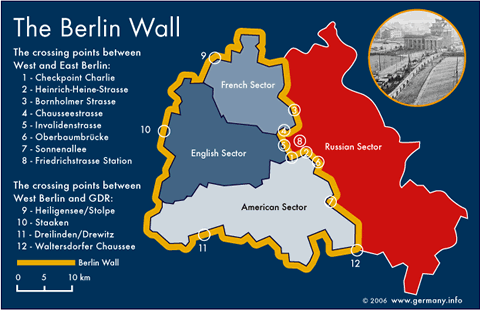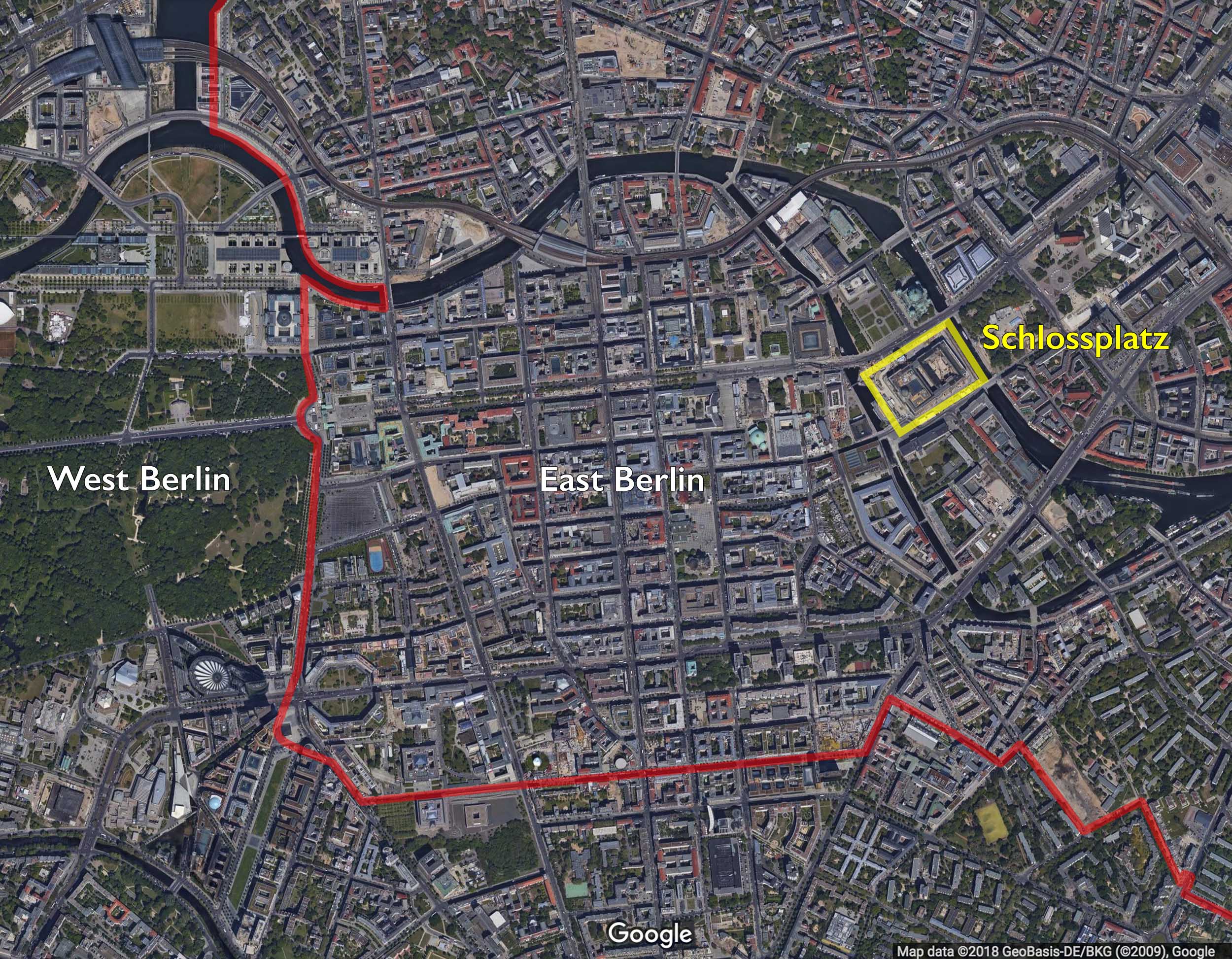

Then he adjourned the conference.Ĭlamoring reporters trailed Schabowski as he left the room.
BERLIN WALL MAP FREE
Finally, reading haltingly from a paper he said he had just received on his way to the conference, Schabowski seemed to say that East Germans were free to travel via all transit points from East to West Germany, including West Berlin, “ ab sofort” (effective immediately). Other journalists sensed his vulnerability and began to pepper him with questions. He fumbled through his papers, familiarizing himself with their contents on the spot. Under the circumstances the question might have been expected, but Schabowski seemed caught off guard. About an hour into the proceedings, an Italian journalist named Riccardo Ehrman asked a question about East Germany’s travel ban.

Schabowski opened the conference, which was broadcast live on East German television, with a dull recounting of a recent Central Committee meeting. It was clear that East Germany was facing a crisis, but no one in the room that evening could have foreseen the historic drama that was about to unfold. This protest movement continued to grow despite the resignation the previous month of Erich Honecker, the leader of East Germany since 1971, and the entire East German Politbüro only the day before. In East Germany itself, the regime teetered as mass demonstrations demanded Gorbachev-style reforms. By the time Schabowski mounted the podium, nearly 200,000 East Germans had made their way to West Germany by these routes. More crowds of East Germans had been gathering at West German embassies in Budapest, Prague, and Warsaw to demand passage to West Germany. Over the summer, East German tourists in Hungary had already taken advantage of that country’s newly relaxed border controls to evade their country’s ban on travel to the West and poured through the border to Austria. Both had been preoccupied with the changes convulsing Communist Europe in the wake of Soviet premier Mikhail Gorbachev’s liberal reforms summarized under the buzzwords Glasnost (openness) and Perestroika (restructuring). Neither he nor the assembled journalists had got much sleep. Günter Schabowski, an official in East Germany’s ruling Socialist Unity Party, ambled to the podium clutching some papers. The Berlin Wall came down on the evening of November 9, 1989, during a hastily arranged international press conference in East Berlin. Morris, German Area Specialist, European Division)


 0 kommentar(er)
0 kommentar(er)
